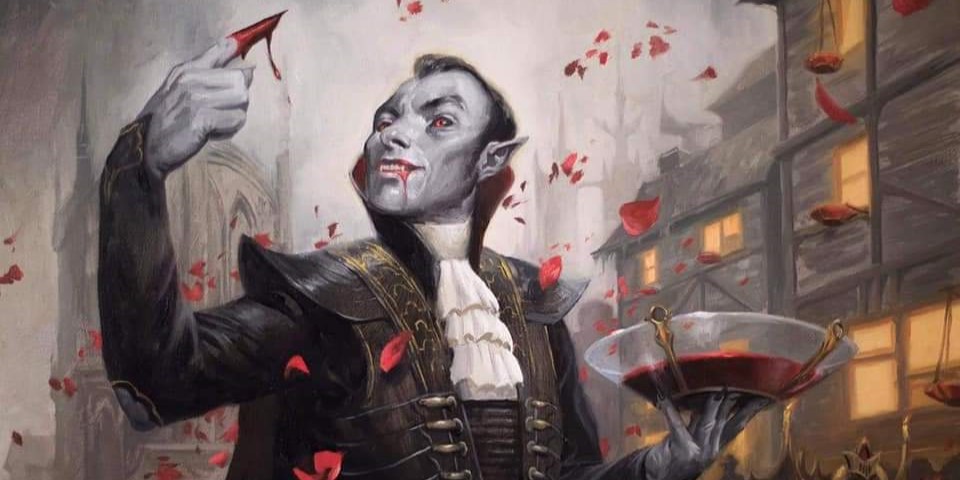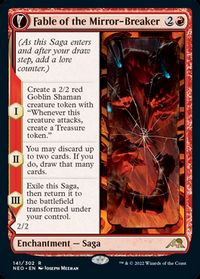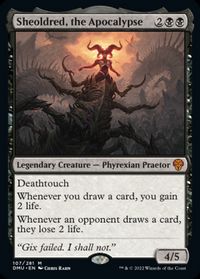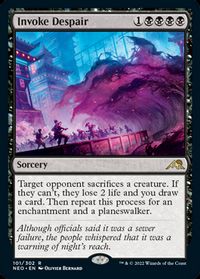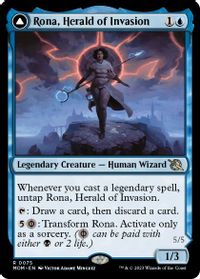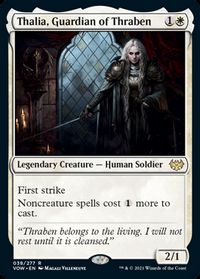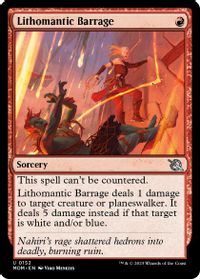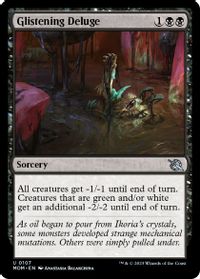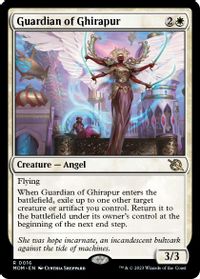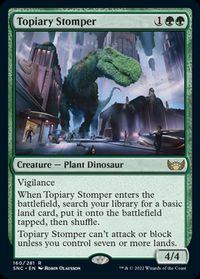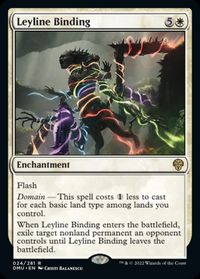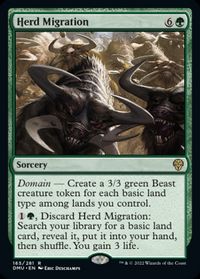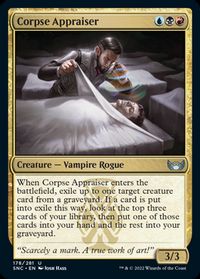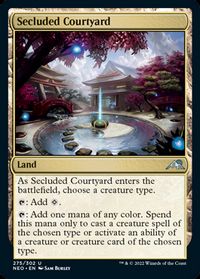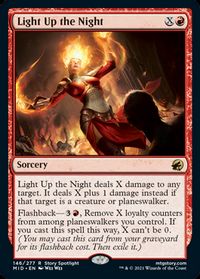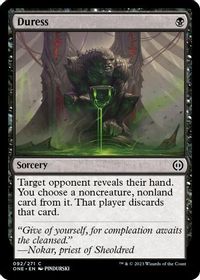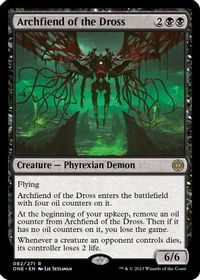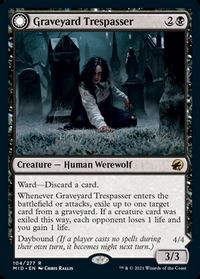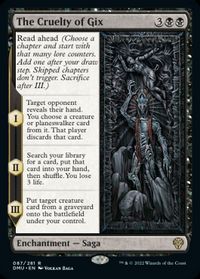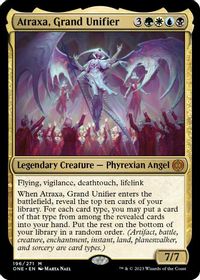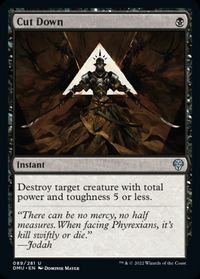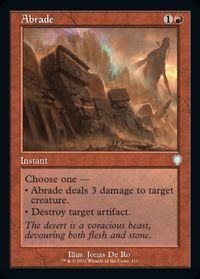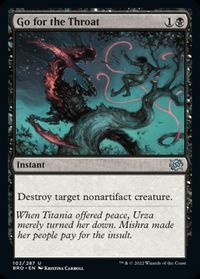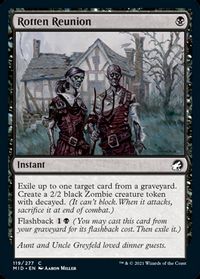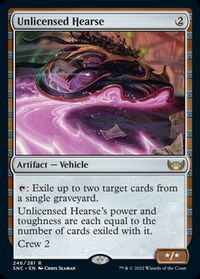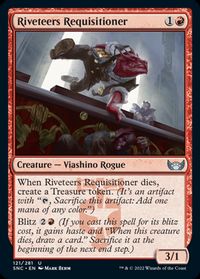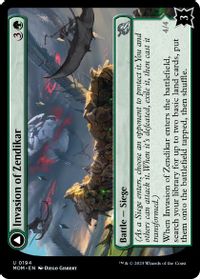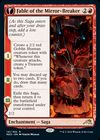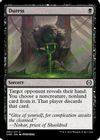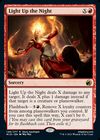(*This article was written before the Banned and Restricted Announcement on 5/30.)
A Collective Win at Pro Tour March of the Machines
Hello again!
At Pro Tour March of the Machines, our team (Team Handshake) put on a dominating performance and got four players into the top 8 of the tournament. These four players ended the Swiss rounds in 1st, 2nd, 3rd and 4th place, and one of them – Nathan Steuer – ended up winning the playoffs and the whole tournament on Sunday. This is one of the best performances by any team ever in the history of the game.
The rest of the team didn’t do badly either: our combined win rate in Standard was 67%, which is a remarkable feat in the modern era of competitive Magic. One of the key ingredients to our success was a great deck choice. It is rare for all our members to submit the same deck in any format, but this time we all decided to play Rakdos Midrange.
Wizards announced that there will be a banlist update in Standard soon, and while our results at the Pro Tour were certainly not the only reason for that announcement, I would be surprised if they didn’t accelerate the retirement of 《Fable of the Mirror-Breaker》. (And I would be even more surprised if 《Fable》 didn’t get the boot in the upcoming update.)
So how did we end up on the deck and what made it so good? How did we tune it for the expected metagame? And how can you identify the best decks yourself?
Read along to find out!
Why Rakdos Midrange?
Before talking about the new cards from March of the Machines and how they changed Standard, we should briefly do a recap of what happened before the set came out. The previous Standard cycle started out by Grixis being the clear deck to beat. Grixis has been a powerhouse in the format for a while now, even winning the World Championship in October.
It simply has access to the most powerful cards and versatile answers in the format: 《Fable of the Mirror-Breaker》, 《Sheoldred, the Apocalypse》, 《Invoke Despair》, 《Reckoner Bankbuster》, 《Go for the Throat》, 《Make Disappear》 and so on.
But then players figured out how to punish the Grixis decks with 《Razorlash Transmogrant》, a card that is very hard for them to deal with. First came along Esper decks which crushed the European Regionals in the hands of Thoralf Severin and Nico Bohny. Then we saw many of the Grixis players give up on the blue cards in favor of a leaner mana base. This reduced their vulnerability to 《Razorlash Transmogrant》 and made Rakdos Midrange one of the most popular decks even before the new set came out.
So how did March of the Machines change things?
One of the first things that was clear to us was that no one in the team really liked Esper anymore. The deck got a new card in 《Rona, Herald of Invasion》, but it didn’t really solve any of the deck’s problems. In fact, I feel like it made some of them even worse. To me, Esper really wants to be an aggressive deck focused on 《Sheoldred, the Apocalypse》 – not another midrange deck trying to out-grind Grixis. 《Rona, Herald of Invasion》 slows the game down and gives the 《Fable of the Mirror-Breaker》 players time to set up their card advantage engines, while eventually being vulnerable to spot removal spells, most importantly 《Cut Down》.
In contrast, I think one of the most thematic cards in the Esper deck is 《Thalia, Guardian of Thraben》. It is an aggressive creature that usually forces the opponent to choose between spending a removal spell on it or having great difficulties in developing their own game plan. 《Fable of the Mirror-Breaker》, 《Reckoner Bankbuster》 and 《Invoke Despair》 become a lot worse when they cost an extra mana. Curving out with aggressive creatures like 《Thalia》 overloads opposing removal spells, making it more likely that your 《Sheoldred, the Apocalypse》 stays alive and wins the game. 《Thalia》 excels in short games and becomes rather worthless in long ones, meaning that it doesn’t pair up very well with 《Rona》.
Not only were the new cards unimpressive in Esper, the Red-Black decks got some great tools against it. 《Lithomantic Barrage》 is the most important one, as it’s a cheap, clean answer to 《Skrelv, Defector Mite》, 《Raffine, Scheming Seer》 and others. 《Glistening Deluge》 can also be devastating in many situations, especially against draws including 《Skrelv》. Both 《Lithomantic Barrage》 and 《Skrelv》 work wonders in the Soldiers matchup too.
Out of the other decks, Mono-White seemed appealing due to a good matchup against some Red-Black variants. We tried different kinds of lists, some splashing red for 《Fable of the Mirror-Breaker》 and 《Etali, Primal Conqueror》, and some blinking 《The Mightstone and Weakstone》 with 《Guardian of Ghirapur》. In the end, none of them felt good enough. In particular, they were susceptible to decks that had a more powerful late game, like the Reanimator decks with 《Atraxa, Grand Unifier》.
We also tried the Domain decks, which were good against Red-Black when they drew well, but had some consistency issues while also struggling against counterspells. There’s definitely room for exploration in this archetype though, so maybe someone someday finds a great Domain list. But under the time constraints of PT testing we were unable to do so.
That pretty much left us with the various flavors of Red-Black, most importantly Grixis, Reanimator and straight Rakdos.
Reanimator was one of our front-runners for a long time and it was championed during the testing process by team captain David Inglis. The version we liked the most was almost straight Red-Black, splashing Blue just for 《Corpse Appraiser》. A key finding for this archetype was 《Secluded Courtyard》, which was not only an untapped fixer for the 《Corpse Appraiser》, but could also help hardcast 《Atraxa, Grand Unifier》 in the late game.
Many other Reanimator players seemed happy to be animating 《Etali, Primal Conqueror》 into play, but we found the dinosaur to not be powerful enough often enough, which felt inexcusable. Reanimator definitely pays a price in being clunkier than the other Red-Black decks, and if you don’t always win even when you get to “do your thing”, what’s the point? Another strike against Reanimator was that it felt vulnerable against Grixis. The counterspells from Grixis made a big difference here, and really punished the Reanimator decks for trying to cast 7 mana cards.
However, I must admit that 《Phyrexian Fleshgorger》 was not on our radar at all, and we did not try lists like the one that Cain Rianhard piloted to a 2nd place finish at the Pro Tour, so maybe that approach is a good one.
After giving up on Reanimator the question was just whether we wanted to play the greedier Grixis deck or the leaner Rakdos deck. They simply felt more powerful and resilient than the other options available. Even if you really tried to beat them, it wasn’t that easy to do so, and the so-called “bad” matchups seemed worse on the surface than they were in reality. The Red-Black core is just incredibly consistent, and the raw power from cards like 《Fable of the Mirror-Breaker》, 《Reckoner Bankbuster》 and 《Invoke Despair》Invoke lets you come back from mulligans much more easily than other decks.
One important addition to these decks was 《Chandra, Hope’s Beacon》 from the new set, which gave a significant boost in power for the long games, especially when combined with the innovation of 《Light Up the Night》. This was particularly valuable in the Mono-White matchup, where the games tend to go very long, and you can just finish them off with direct damage by assembling the combo of those two cards.
As for choosing between Grixis and Rakdos, for the most part they are exactly the same deck. However, we really liked 《Duress》 in the format and therefore preferred the smoother mana base that could actually cast it on turn 1. Consistency of the mana base felt more valuable than the slightly stronger cards. And while 《Make Disappear》 a 《Fable of the Mirror-Breaker》 on the draw felt great, the mirror matches often went long and the conditional counterspell was definitely sometimes a liability as well, especially if the opponent knew about it because of 《Duress》.
《Razorlash Transmogrant》 was of course another reason. While savvy Grixis players would certainly have some answers to it in their deck, like 《Flame-Blessed Bolt》 or 《Anoint with Affliction》, it’s always better to be on the side of the powerful threats than the one with situational answers.
Tuning the Deck
The last steps of the testing process were finding the optimal list of the deck and good plans for each matchup. For reference, here is the list that Nathan Steuer, Javier Dominguez and I played in the tournament:
Other members on our team had very similar lists, but they deviated in the last couple of slots in ways that I will explain a bit later.
The key cards of the deck are 《Fable of the Mirror-Breaker》, 《Invoke Despair》, 《Reckoner Bankbuster》 and 《Sheoldred, the Apocalypse》, and almost everything else revolves around these cards. I mentioned earlier that we liked 《Duress》 a lot in this deck, and these cards are the reason why. 《Duress》 is both good with them and against them, giving you a decent edge in all of the mirror matches. Most of us agreed after the tournament that we should’ve gone even further and played either 3 or 4 《Duress》 main deck instead of 2. Tristan Wylde-LaRue moved all 4 to the main deck for the Sunday PTQ and re-qualified to Barcelona with that configuration. It is hard for me to overstate how many important tasks the 《Duress》 perform.
Among other things, they…
*Take the opponents key cards (《Fable of the Mirror-Breaker》, 《Reckoner Bankbuster》, 《Invoke Despair》).
*Protect your own key cards (《Reckoner Bankbuster》 from 《Abrade》, 《Sheoldred, the Apocalypse》 from 《Go for the Throat》 etc.), which are powerful enough to run away with the game if left unanswered.
*Give you crucial information about how you should line up your threats and answers – for example, if you see a 《Sheoldred, the Apocalypse》 in their hand you know you should hold onto your 《Go for the Throat》.
*Lower your curve to give you a critical mass of cheap 1-for-1 trades to facilitate the full 4 copies of 《Reckoner Bankbuster》.
Many other Rakdos Midrange lists play 4 copies of 《Sheoldred, the Apocalypse》 and even some copies of 《Archfiend of the Dross》 on top of that, but we felt this made the deck too clunky and vulnerable to specifically 《Invoke Despair》. If you play 6 copies of 4 mana threats, you end up in too many situations where your only option is to play the 4 drop and pray they don’t have an answer, but if they have a 《Go for the Throat》 or an 《Invoke Despair》 you suffer an unrecoverable loss of tempo.
If you play 2 to 3 copies of 《Sheoldred》, you can often hold it for a while and play it among your last cards, when your opponent has likely already exhausted their resources, or your 《Sheoldred》 is at the very least protected from their 《Invoke Despair》 thanks to tokens, 《Reckoner Bankbuster》 or so on.
It was impossible to get everyone to agree on the optimal number of Sheoldreds because it had a very volatile impact on the games. However, all of us agreed that the number was either 2 or 3.
Another unique feature of our Rakdos list was going down on the number of 《Graveyard Trespasser》, which was a 4-of in the stock lists going into the tournament. Daniel Goetschel and Willy Edel, the two best performing Rakdos players outside of our team, both played the full 4 copies of it at the tournament as well.
However, most of us didn’t feel like it was particularly impactful in any of the matchups – it just very rarely seemed to matter in the games. Even against the Reanimator decks where you would expect a graveyard hate card to be at its best, it seemed to underperform. A lot of the time they could play around the Trespasser by discarding the animated cards on the same turn with the third chapter of 《The Cruelty of Gix》 thanks to a Blood token, a 《Fable of the Mirror-Breaker》 trigger or even the 《Graveyard Trespasser》 itself!
The last one was definitely the most awkward one. It was tilting to play the 《Graveyard Trespasser》 only for them to kill it in their draw step, discarding an 《Atraxa, Grand Unifier》 to the Ward trigger, and then animating the 《Atraxa, Grand Unifier》 with a 《The Cruelty of Gix》 in their main phase.
We had some disagreement about this subject so none of us dared to go below 2 copies, but we definitely considered doing that too. Also, everyone outside of the team seemed to like the card a lot, so we were afraid that we might just be wrong about it, which made us reluctant to cut more copies. And even though it wasn’t impressive in any matchup, it wasn’t terrible against anything either, so we thought it was fine to still have some in the deck.
The removal suite was something we also didn’t fully agree on, and it’s not very clear what the optimal configuration is. I believe pretty much every one of us had 3 《Cut Down》 and 1 《Abrade》 in the main deck with 3-4 copies of 《Go for the Throat》 and 1-2 《Light Up the Night》. The choice between the 4th 《Go for the Throat》 or the 2nd 《Light Up the Night》 comes down to how much you value the finishing potential of the burn spell compared to the efficiency of 《Go for the Throat》 against threats like 《Sheoldred, the Apocalypse》 and 《Raffine, Scheming Seer》. If you expect a lot of Esper in the metagame, I recommend the 4th 《Go for the Throat》, whereas in a metagame with lots of Domain and Mono-White I would recommend the 2nd 《Light Up the Night》 instead. A 2nd copy of 《Abrade》 would also be a very reasonable choice for the main deck.
One thing we didn’t disagree on was playing 2 《Sokenzan, Crucible of Defiance》. Traditional wisdom says to play only 1 copy of legendary lands, but channeling 《Sokenzan, Crucible of Defiance》 came up so often in our testing games that we wanted a 2nd copy as well. Not only do the tokens help you win damage races, they are also perfect fodder to sacrifice to opposing 《Invoke Despair》. Mana sources that produce only red mana are pretty bad in multiples anyway because of 《Invoke Despair》, so in the cases where you draw both 《Sokenzan, Crucible of Defiance》 it’s not very likely that a 《Mountain》 would be much better. Also, you can often just loot away the extra copy with 《Fable of the Mirror-Breaker》 or a Blood token.
Another noteworthy and uncommon tech card that we had in the sideboard was the 1-of 《Rotten Reunion》. We chose this as a hate card for the Reanimator matchup because it can’t be interacted with. 《Unlicensed Hearse》 can be 《Duress》 or 《Abrade》, but the 《Rotten Reunion》 can’t. Being a cheap instant that’s castable with a single Treasure token makes it very scary and risky for the opponent to ever go for a 《The Cruelty of Gix》 chapter 3.
Karl Sarap played a slightly different main deck from us, with a 1-of 《Liliana of the Veil》 and a 1-of 《Razorlash Transmogrant》 in the main deck. I’m not too high on the main deck 《Razorlash Transmogrant》 unless you expect a ton of Grixis, but the Liliana seems quite good as it comes in from the sideboard in most matchups anyway.
Tristan and David played a 1-of 《Riveteers Requisitioner》 to have another 2-drop in the deck, which seemed fine but not particularly exciting. The treasure token can be valuable in accelerating your 《Invoke Despair》 and 《Chandra, Hope’s Beacon》.
Lean Mean Rakdos Machine
When we discussed the different flavors of Black-Red with the team, Austin (Bursavich) pointed out that the Rakdos Midrange version felt “buttery smooth” and “clean” compared to the other variants. By this I believe he meant very similar things to what I described in my article “How to Beat Bad Luck” a few years ago. If you haven’t read it before, I recommend doing so now – I personally believe it’s probably the most useful article I’ve ever written.
- 2020/07/06
- How to Beat Bad Luck
- Matti Kuisma
At the end of the article I say that the criterias mentioned in the text are some of the best metrics for trying to figure out what deck you should play. And if you check the criterias, Rakdos Midrange is a picture perfect poster child of a “Best Deck”. It beats bad luck more often than the other options.
For example, the Zone of Optimal Performance is quite wide for Rakdos. The curve is, for the most part, relatively low, and some of the cheaper cards can either help you dig towards additional lands (《Fable of the Mirror-Breaker》, 《Reckoner Bankbuster》) or help you stay alive until you draw them (basically every one of them). The cards are also capable of trading up on mana (e.g. 《Cut Down》), which is crucial for surviving situations where your opponent has more mana than you do.
And if you draw a lot of lands, you have ways to recover from that too. You can cycle them away with 《Fable of the Mirror-Breaker》 and Blood tokens, simply draw a lot of extra cards with 《Reckoner Bankbuster》 and 《Invoke Despair》, kill them with a big 《Light Up the Night》 or channel 《Sokenzan, Crucible of Defiance》 and 《Takenuma, Abandoned Mire》 for spell-like effects.
It also has much fewer things that can go wrong compared to the other decks in the format. For example, Domain and Reanimator are much more reliant on drawing a correct mix of different kinds of cards. Domain usually has to draw removal spells to stay alive, ramp spells to not be too slow, and their expensive cards to get back into the game after ramping. If any of these puzzle pieces are missing, they can be in big trouble. The cards in the Rakdos deck, on the other hand, are mostly relatively cheap, proactive and powerful, so all the combinations tend to work out.
The Reanimator decks can sometimes discard their big creatures and then never draw a 《The Cruelty of Gix》 to animate them. Rakdos simply doesn’t have similar issues, as it’s not reliant on any specific card in the deck, nor does it risk drawing multiple uncastable 7 drops.
And like I already said earlier, Rakdos has quite a bit of card advantage so it can easily recover from mulligans. If you have a 《Fable of the Mirror-Breaker》 and a 《Reckoner Bankbuster》 you barely even notice that you’ve mulliganed. I believe it’s much easier to win on a mulligan to 5 with Rakdos than with Domain or Soldiers.
To top it all off, Rakdos has probably the second best mana base in the format after Mono-White. I can only describe the two-color mana base with lots of untapped dual lands as buttery smooth.
Conclusion
Sometimes decks don’t have to be fancy to be good, instead they can be straightforward powerhouses that combine the most potent threats with the most efficient answers. The new, efficient sideboard cards from the latest set really separate Rakdos Midrange from the rest.
If you’re playing Standard in the near future, I highly recommend the deck. And if you’re trying to beat it… well, good luck, you’re gonna need it!
However, it seems like the deck won’t be legal in the format for much longer, which is why I skipped the sideboard guide this time. I hope this was still an interesting case study of how we identified Rakdos as the best deck for this tournament, and a lesson in how you can spot decks like this yourself in the future.
Until next time,
-Matti (Twitter)


